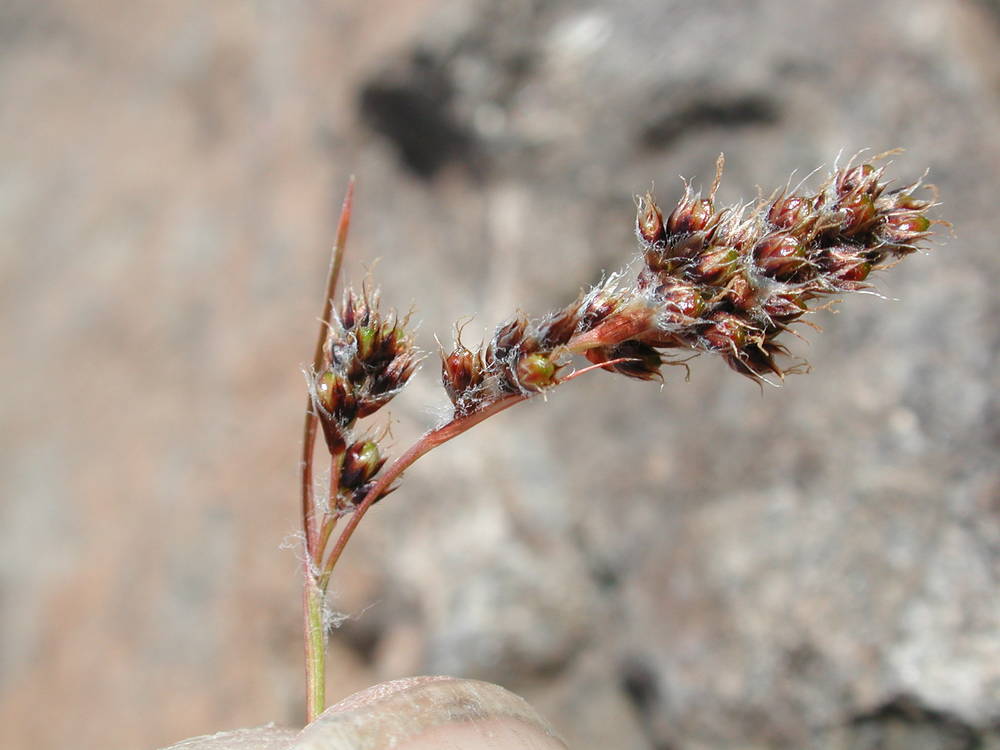
as described under Luzula spicata
Culms densely cespitose, reddish, 3--33 cm, base thick, extending 1--8 cm into soil. Leaves: sheath throats densely hairy; basal leaves erect, channeled, linear, 2--15 cm x 1--4 mm, apex not callous; cauline leaves 2--3. Inflorescences panicles of dense, nodding, spikelike clusters (each 1--25 mm), often interrupted by 10--70 mm; proximal inflorescence bract conspicuous, generally exceeding inflorescence; bracts clear; bracteoles clear, margins ciliate, apex narrow, extended. Flowers: tepals brown with clear margins or very pale throughout (outer whorl bristle-pointed), 2--2.5 mm; outer whorl longer than inner whorl; anthers ± equaling filaments. Capsules pale to dark brown or blackish, round (apex ± acute), generally shorter than tepals, apex ± acute. Seeds brown, cylindric-ovoid, body 1--1.2 mm; caruncle 0.2 mm. 2n = 24.Flowering and fruiting summer. Alpine slopes and heaths, dry or damp situations among grasses, herbs, or lichens, and in subalpine forests; 0--3700 m; circumpolar; Greenland; St. Pierre and Miquelon; Alta., B.C., Man., Nfld. and Labr., N.W.T., Nunavut, Que., Yukon; Alaska, Calif., Colo., Idaho, Maine, Mont., Nev., N.H., N.Mex., N.Y., Oreg., Utah, Vt., Wash., Wyo.; Eurasia.The culms of Luzula spicata are thick and reddish with bases extending 1--8 cm into the soil; sheath throats are densely hairy; basal leaves are erect, linear, and channeled; inflorescence bracts are conspicuous and often exceed glomerules; and bracteoles have narrow and extended apices.